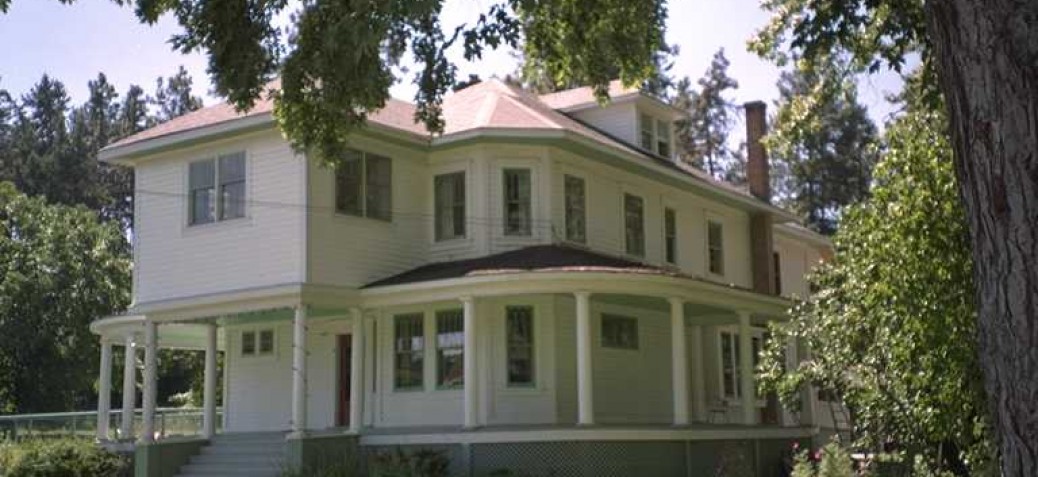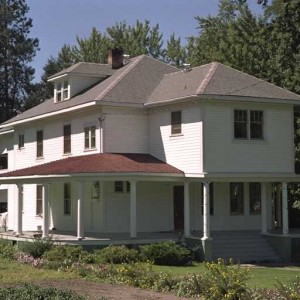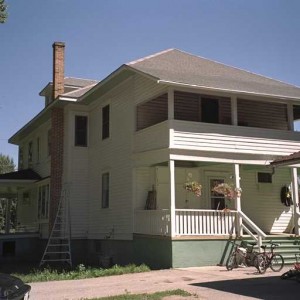Third Casorso House
Place Description
The historic place is the 2.5-storey, wood-frame Third Casorso House, built in 1907 in the foursquare manner, and located at 3860 Casorso Road in Kelowna's southeast sector.
Heritage Value
This was the third (and last) home of Giovanni ('John') Casorso, marking the successful achievements of one of the most important early pioneers in the Kelowna area. The house, now modernized, continues to be a Casorso family home; the current occupant is August R. Casorso, Giovanni's grandson.
The original Casorso homestead of 320 acres is the oldest family farm in Kelowna, still operated by members of the Casorso family some 120 years after Giovanni Casorso preempted it in 1884. Over the years the Casorsos have been pioneers in a wide range of agricultural production: cattle, hogs, vegetables, tobacco, fruit, and grapes. In his old age John Casorso was involved in the establishment of Kelowna's first winery, which became Calona Wines.
Giovanni Casorzo (the original spelling) came to the New World from his native Italy in 1882, looking for new opportunities, and made his way across the continent. In July of 1883 he met Father Pandosy in New Westminster and was offered work at the Oblates' Okanagan Mission. While working for the Oblate fathers, Casorso pre-empted land across Mission Creek. His wife Rosa and three children arrived from Italy in 1884.
The family worked hard clearing land, planting, and acquiring their first stock. Their first home was a one-room, sod-roofed log cabin. Their second log house, built in stages between 1886 and 1891 (3877 Casorso Road), accommodated the rapidly growing family (nine children in total) for many years, and was famous for its hospitality. The financial success of the family as the children grew up meant that this larger and more modern house could be built.
Using lumber cut and milled on their property, the Casorsos built this large and elegant foursquare frame home in 1907. It had nine bedrooms, a large guest room, dining room, kitchen, and more. A separate room to house the pasta-maker. But while it had running water from the Casorsos' own water system, there were no indoor toilets, because John Casorso believed those 'make you lazy, soft, spoiled.' Electric power was not available in Okanagan Mission until the 1930s, so the house was lighted by kerosene lamps. It did have a telephone, one of the first in the Mission area.
When the new house was finished and furnished, John and Rosa did not move in, but rather lingered in their old log house, full of their memories. So on New Year's Eve of 1907 the neighbours secretly arranged a grand New Year's party and in the midst of it moved the couple, willy-nilly, into their new home. While various of the children moved off throughout the Okanagan valley to establish their own farms and enterprises (such as the Sanitary Meat Market in the Casorso Block [411-437 Bernard Avenue] in downtown Kelowna), John and Rosa Casorso lived in this house until her death in 1921 and his in 1932. At that time he was remembered in the local newspaper as 'about the oldest old-timer of Kelowna.'
The house, with various alterations and modernizations (such as indoor toilets), has continued to be occupied by Casorsos. August R. Casorso, John's grandson, is the current occupant.
Character Defining Elements
- Core is box-like foursquare in form, with a hipped roof (modified by alterations and additions, including wings at the sides)
- Hipped dormer window
- Central brick chimney
- Large wrap-around verandahs with rounded corners
- Projecting bay window on street elevation
- Second-floor sleeping porch
- Windows include original wood-sash, double-hung one-over-one wood sash; also five-over-one wood sash with elaborate surrounds
- Bevelled horizontal wood siding
- Large lot with many trees, including oaks along driveway
- Small forest on sloped land as a backdrop to the house
- Large, dominant house with no others nearby






